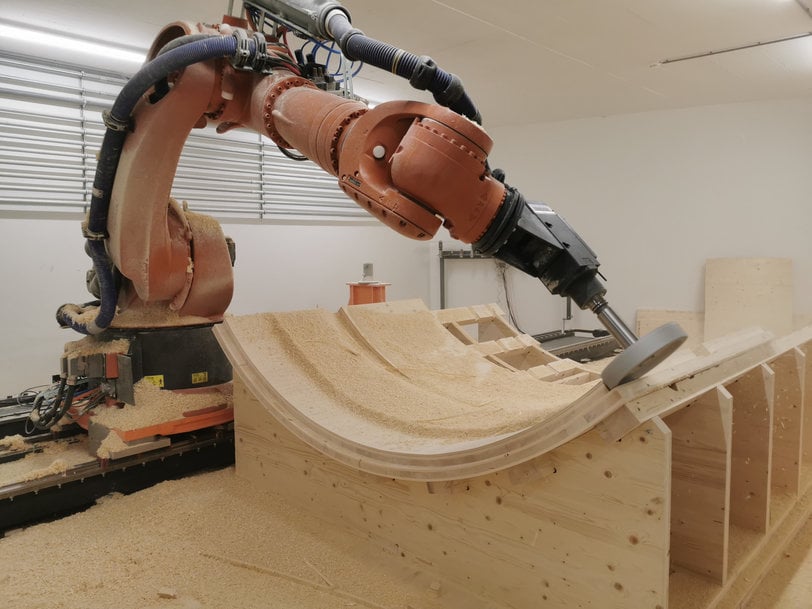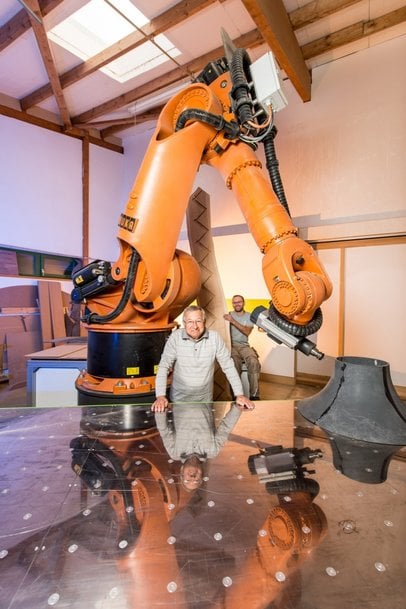www.magazine-industry-usa.com
11
'21
Written on Modified on
Tradition Meets Technology: Robots Provide Support in Joineries
Industrial robots are not only found in large production facilities. Robots also increase productivity in the skilled trades. An insight into two family businesses.

In joineries, we can see how state-of-the-art technology complements traditional craftsmanship in a meaningful way. About ten years ago, the Eigenstetter joinery in Rehna, in the north-west of Germany, was faced with a huge project - a KUKA robot was the solution. To this day, the metal giant, which can carry up to 500 kg, mills large-volume components in a cell with the utmost precision. A circular front door with a stitched arch for a round tower: When the joinery received this order in 2011, it needed a special solution.
The company specializes in interior fittings and the manufacturing of windows and doors. But the complex and technically demanding order presented the 21-employee joinery with a new challenge. Master carpenter Axel Eigenstetter relied on high traditional craftsmanship. His son Martin, who studied mechanical engineering, brought technical digitization into the family business - and created a robot milling center of impressive dimensions that is unique in the woodworking trade to date.

Master carpenter Axel Eigenstetter (left) stands in front of theindustrial robot with his employee Gunnar Mai.
New Robot Colleague Enables Larger Projects
A robot in a joinery? Martin Decker couldn't imagine that working. "But I have to admit that it has opened some doors," says the carpenter and project manager from Itter in Tyrol. About four years ago, the craftsman was faced with a project for an architect in England that pushed the old CNC milling machine to its limits. "It involved a large bench into which a seat was to be milled. But the machining height of the five-axis CNC milling machine was too small," explains Decker.
So they looked around for alternatives and, by chance, came across a robot. "We found a supplier in Tyrol that had a KUKA robot," he recalls. With the help of its new robotic colleague, the Decker joinery has now been able to tackle even larger projects. "We were able to mill parts for huge tree houses, as well as elliptical staircase stringers or unusual freeforms," Decker explains. The Decker joinery has 42 employees and has been in operation worldwide for about 40 years.
Future Potential Follows Initial Skepticism
"Instead of laying off employees, we actually hired two more," Decker says. Other joineries from the surrounding area would have special parts made by them. In addition, he says, the company has become more attractive to trainees, who also learn CNC skills in a four-year carpentry technician training program. Decker's conclusion on the acquisition of the robot: "You really have to dare to take this step - and also become a little inventive yourself. But it's worth it."
Eigenstetter is already working on the next project with the local Fraunhofer Institute. "We want to use smaller robots in medium series on carpentry machines such as a milling machine or a belt sander according to the part-to-tool principle," he explains. The parts to be machined are placed in the machines by robots. He sees great potential for the future in this area.
www.kuka.com

